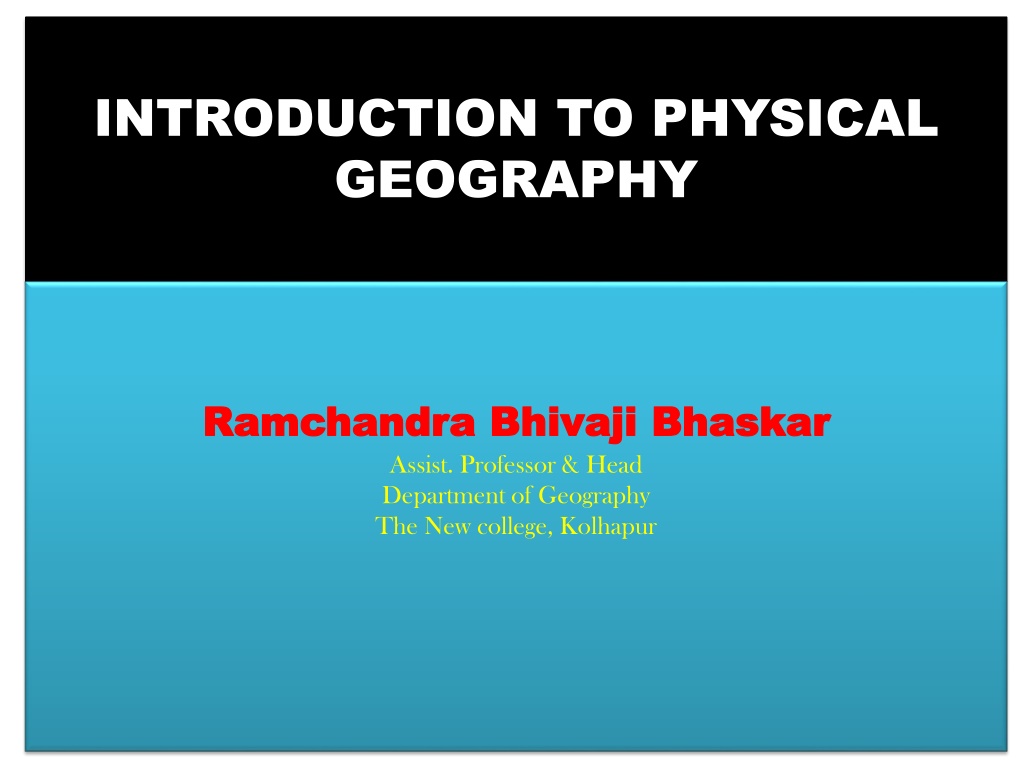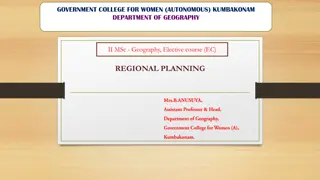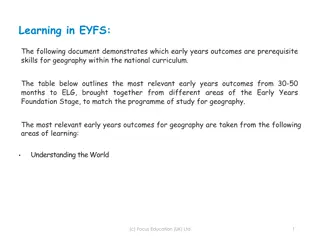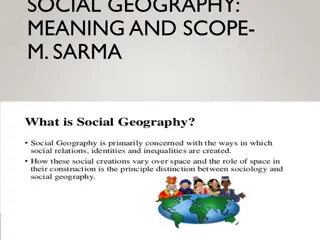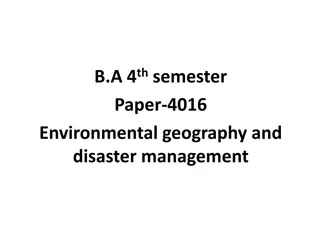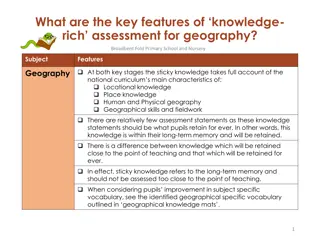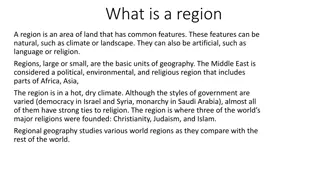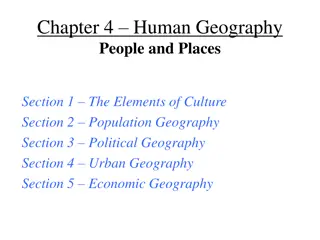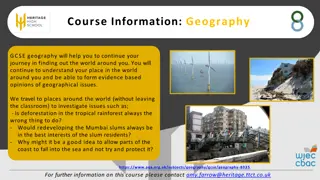Introduction to Physical Geography and Historical Background
In the world of geography, from the historical figures like Behaim and Varenius to modern-day definitions by scholars like Arthur Holmes and Richard Hartshorne, this field encompasses a vast study of natural and human-made phenomena tied to spatial dimensions. Delve into the foundation of physical geography, its key elements, and the rich history that shaped the way we perceive and analyze the Earth's features.
Download Presentation

Please find below an Image/Link to download the presentation.
The content on the website is provided AS IS for your information and personal use only. It may not be sold, licensed, or shared on other websites without obtaining consent from the author. Download presentation by click this link. If you encounter any issues during the download, it is possible that the publisher has removed the file from their server.
E N D
Presentation Transcript
INTRODUCTION TO PHYSICAL GEOGRAPHY Ramchandra Ramchandra Bhivaji Assist. Professor & Head Department of Geography The New college, Kolhapur Bhivaji Bhaskar Bhaskar
Geography HISTORY Behaim s (1492) Two dimension maps Varenius (1622-1650) General Geography Immannel kant (1724-1804) Geology, Zoo and Botony Europe and US (1800 century) Humbolt Cosmos Ritter erdkunde Ratzel Father of human geography W M Davis - Geomorphology Penk Physical Geography Richard Hartshorne- Nature of Geography Bowman what, where and why Taylor Correlative science Blache Science of places David Harvey areal differentiation
geography The study of natural and human constructed phenomena relative to spatial dimension. The study of the features of the earth surface including with spatial distribution, interrelationship and the interaction of the man with them. HISTORY 400 yrs ago Map features and places observed as explores Greeks Greek philosophers and scientist learning about nature of human and physical features found on earth Herodotus (484-425BC) human and physical geography Aristotle (384-322BC) Earth had a spherical shape Eratosthenes (276-194BC) Equatorial circumference Roman Strabo (64BC-20AD) Cultural Geographia Ptolemy (100-178AD) Latitude and Longitude Arab Al-Idrisi, Ibn-Buttutah & Ibn- Khaldun Making of map & descriptive Geo.
DEFINITION OF GEOGRAPHY Geo Earth, Graphia Description 1. Field Survey 2. Observation 3. experimental 4. analysis 5. Space 6. Temporal 7. Interaction 8. Location 9. Distribution 10. Pattern 11. Processes 12. Structure 13. Composition 14. Stage
DEFINITION OF PHYSICAL GEOGRAPHY The study of Physical environment Arthur Holmes: The study of physical geography which includes consideration of surface relief of the globe, of the seas and oceans and of the air. W. M. Davis The study of composition, processes and stage of the physical features. Webster : The study of transformation in landscape, water, climate etc. Richard Hartshorne The systematic description of earth surface forces Arthur Holmes : The study of unification of a number of earth science which gives us general insight of earth environment.
Element of geography PHYSICAL GEOGRAPHY PHYSICAL GEOGRAPHY HUMAN HUMAN GEOGRAPHY GEOGRAPHY Rocks and Mineral Population Land forms Settlement Soil Economics activities Animal Transportation Plants Recreational activities Water Relation Atmosphere Political System River and other water bodies Social Tradition Environment Human Migration Climate and Weather Agricultural System Oceans Urban System
SCOPE OF PHYSICAL GEOGRAPHY 1. Lithosphere 2.Hydrosphere 3.Atmosphere 4. Biosphere
Branches of physical geography PHYSICAL GEOGRAPHY HUMAN GEOGRAPHY Geomorphology Economic Geography Climatology Social Geography Hydrology Urban Geography Oceanography Rural Geography Pedology Tourism Geography Landscape ecology Transport Geography Glaciology Demography Geodesy Political Geography Palaeogeography Cultural Geography Quaternary science Historical Geography
Branches of Geomorphology & climatology CLIMATOLOGY GEOMORPHOLOGY Physical & Dynamical Energy exchange & physical component atmosphere motion Fluvial Rivers, Sediments, drainage Aeolian Winds, Deserts Applied Forestry, agri, Industry, soil Hill slope Soil, regolith, rock, gravity Descriptive Analytic approach, Stat, Math & synoptic Glacial Ice, abrasion, plucking, moraine Scale Tectonic Fold, faulting Micro Relate to ground Meso Region Coastal Sea floor, beaches dunes Macro world
Importance of physical geography Geology Environment Engineering Archaeology Ecology Planetary Science Environment policy and Management Remote Sensing Soil conservation Rehabilitation project Urban Planning Agriculture Tourism Transportation development
